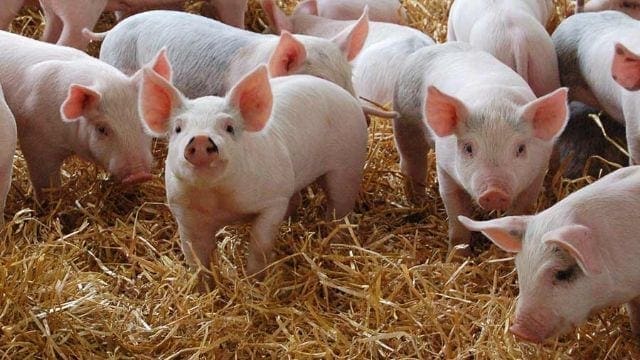ZIMBABWE – The Zimbabwe Agricultural Growth Programme (ZAGP), a partnership between government of Zimbabwe, the European Development Fund and the European Union, has bought 245 pig breeding stock from South Africa to help boost production.
In its latest newsletter, ZAGP said the breeding stock imported through the Value Chain Alliance for Livestock Upgrading and Empowerment (Value) project, consists of grandparent and parent stock of duroc, landrace and large white breeds.
“We are grateful to the government of Zimbabwe and the European Union for supporting this noble initiative. The top quality genetics are coming in at a time when the majority of small-scale farmers have expressed interest in accessing improved genetics,” said value team leader Newton Chari.
Prevalence of tired pig genetics among small and medium pork producers has resulted in poor feed conversion ratios in the country and increased susceptibility to diseases, resulting in lower carcass weight and poor quality meat, thus affecting profits, reports News Day.
“The breeding stock will largely address breeding level system constraints that have otherwise affected our farmers in attaining the desired productivity, organisational efficiencies and market competitiveness,” Chari said.
Farmers can access the genetics through Shamiso Farm, Bradford Farming and Pig Industry Board integrators in the form of boars and gilts or through artificial insemination services.
Samson Chauruka of Shamiso Farm said the importation of new progeny and genetics was a key investment for competitive and comparative capacity being in-built into the small-scale pig production sector and its evolution and mainstreaming into the commercial pig production industry.
Braford Farming managing director George Mudanga said they were going to breed the pigs and avail semen as well as the progeny to farmers in their pork producer business syndicates in order to boost production.
To address inclusion issues, the progeny from the breeding stock will also be channelled to 600 women and young farmers through a weaner to finisher programme.
Meanwhile, ZAGP also revealed that it has managed to procure 200 in-calf heifers from South African to help boost the country’s cattle genetics. The first batch of 105 in-calf heifers arrived in Zimbabwe on April 26, 2020 via the Beitbridge Border Post.
The country requires at least 130 million litres of milk per annum, but the local dairy industry is only able to supply about 80 million litres, with the balance being imported.
Zimbabwe’s dairy herd currently stands at 34 124, yet the ideal herd size is around 50 000 dairy cattle.










